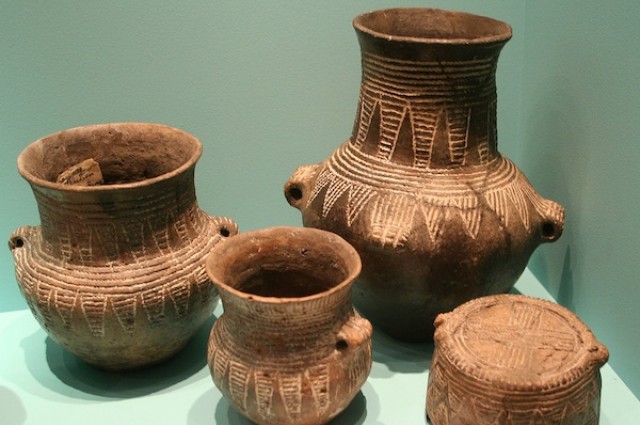
Proto-Indo-European is the ancestral tongue of 400 languages and dialects, including English, German, Italian, Greek, and Hindi. It appeared in historic records dating back 3,700 years, but researchers have long debated over where and when Proto-Indo-European originated and how it spread. Some say it happened around 9,000 years ago in Anatolia (modern-day Turkey) and then dispersed along with agriculture; others think that it arose between 6,500 and 5,500 years ago in the grassy steppe lands of Ukraine and Russia, north of the Black and Caspian seas.
Now, two new analyses—one linguistic, one genetic—both offer evidence to support the Steppe Hypothesis, which suggests that language spread westward along with innovations related to pastoral farming: horse domestication, wheeled vehicles, and wool weaving.
via IFLScience
photo credit: Corded ware pottery at the Museum für Vor- und Frühgeschichte in
Berlin / Einsamer Schütze via Wikimedia CC BY-SA 3.0





